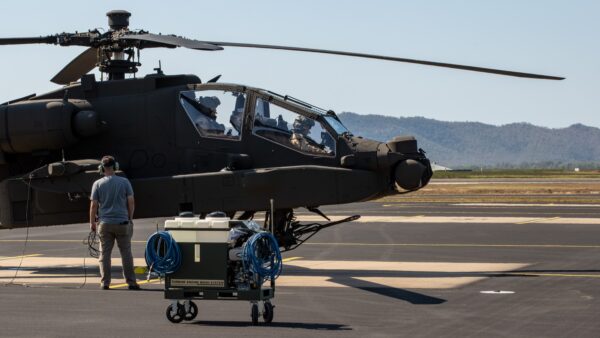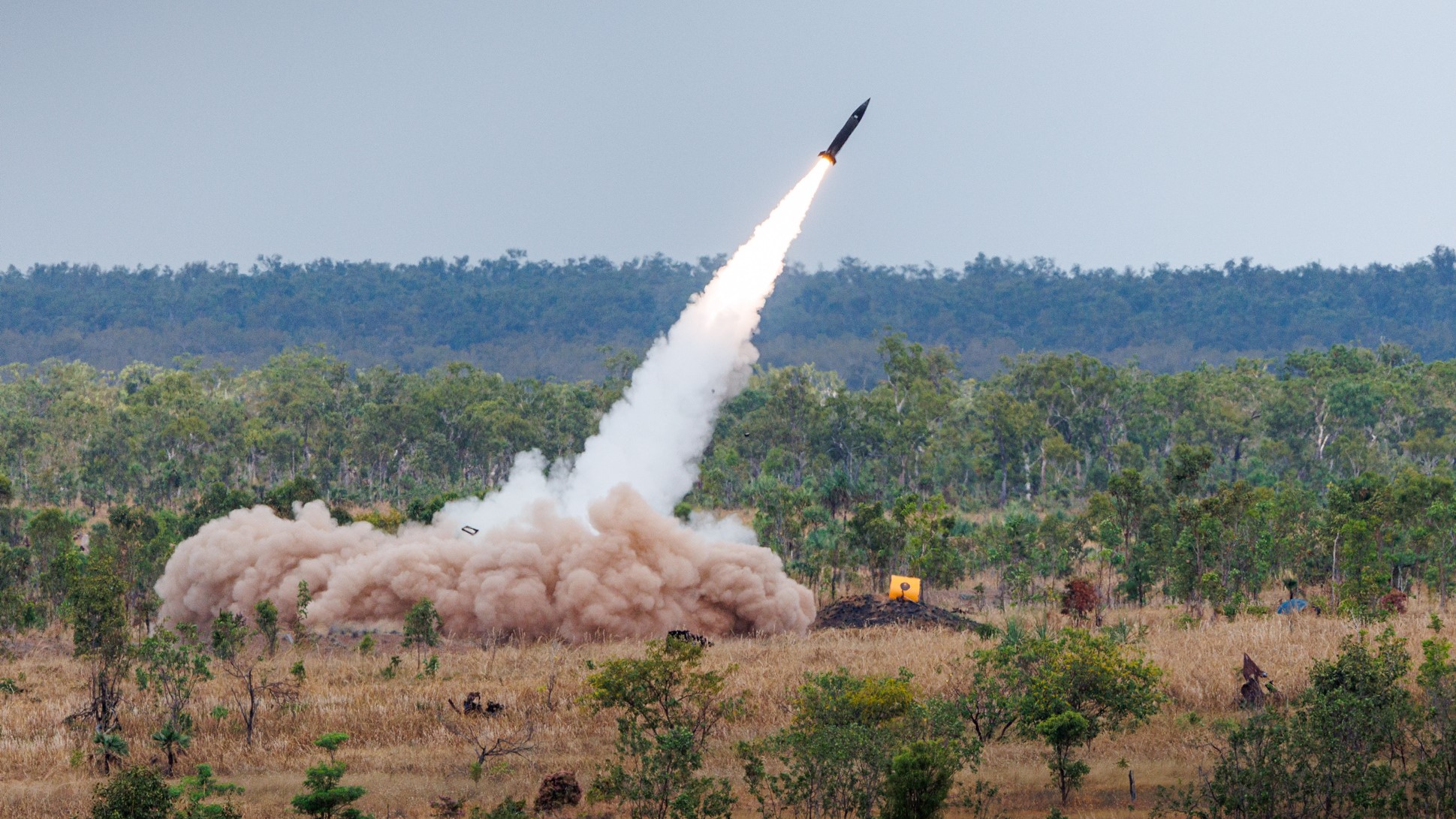Long-range missile production capability could see Australia become a part of the US military’s global supply chain.
The federal government is already spending $21 billion over 10 years to establish a missile and munitions production industry and to strengthen its weapon supply chain.
Last month, Canberra signed a joint statement of intent in Washington DC with the US Government and weapons maker Lockheed Martin Corporation to build long-range guided missiles.
The first of these will be the Guided Multiple Launch Rocket System (GMLRS) and Precision Strike Missiles (PrSM).
A statement from the Australian Defence Force (ADF) says that for guided missile manufacturing in this country to remain viable, Australia needs to produce more than what the ADF needs.
The statement also acknowledges that Australian missile production could be “integrated” into the American military global supply chain.
The ADF says it is on track to produce GMLRS weapons before the end of 2025 and could make more in the future.
PRECISION STRIKE MISSILE
US President Donald Trump has said this will directly support more than 200 manufacturing suppliers in Texas, Florida, Arkansas, and Alabama.
An Australia-US office has opened in Huntsville, Alabama, to oversee the purchase and production of PrSM missiles from Australia for the US.
The PrSM is a long-range missile with a maximum range beyond 500 kilometres and will be at the heart of Australia’s land and maritime strike capability, the ADF says.
A factsheet from the US Embassy in Australia says the federal government is committed to sharing the burden of defence spending by spending more to bolster the US-Australia alliance.
It points to the US Department of Defence (or Department of War) helping fund a new 100 metric tonne-a-year advanced gallium refinery in Western Australia to boost self-reliance in critical minerals processing, which is dominated by China.
“The statement reflects the government’s determination to accelerate the delivery of advanced capabilities that keep Australians safe while strengthening our defence industrial base,” Defence Industry Minister Pat Conroy says.
“This milestone is a clear demonstration of our shared commitment to building a resilient and interoperable industrial capacity for Australia and the US.”
Australia will also reportedly spend $2 billion on US companies to supply equipment for its air and missile defence system.

NEW APACHES ARRIVE
The Australian Army recently took delivery of two of 29 new AH-64E Apache attack helicopters at RAAF Base Townsville.
The helicopters are part of a $4.5 billion deal under the US Foreign Military Sales program which allows the US to sell weapons to other countries.
Boeing Defence Australia will service the new Apache fleet under a seven‑year contract worth $306 million that will create more than 240 jobs across Queensland, 170 of them in Townsville.
A Townsville Aviation Training Academy will be established to train new maintenance personnel on the Apache and CH-47F Chinook troop helicopter fleets.
Canberra is also spending $700m to upgrade facilities at RAAF Base Townsville to house the new Apache fleet and the relocated 1st Aviation Regiment and 16th Aviation Brigade headquarters.
This work includes building and renovating hangars, more accommodation; new training and command facilities; a simulation hall for Apache pilot training, the Army Aviation Training Centre Attack Helicopter Wing; and multi-storey car parks.
Army crews have been learning to fly the Apache in the United States and United Kingdom.
Full delivery will happen by 2029, the ADF says.
MORE DEFENCE NEWS: Five pillars for Aust defence spending






